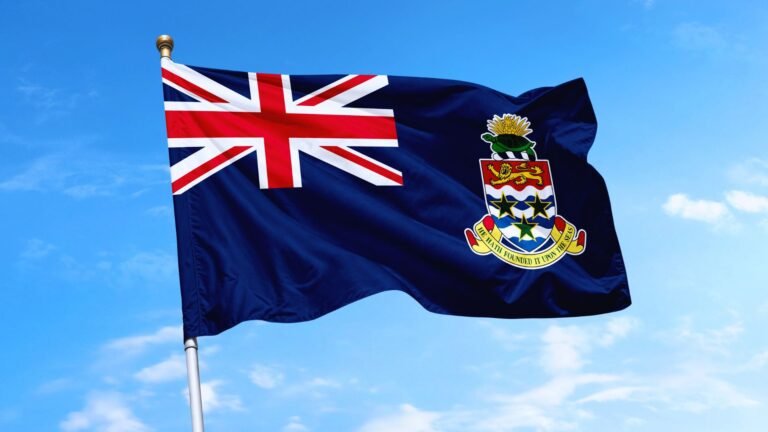On 4 July 1959, the Cayman Islands formally ended their standing as a dependency of Jamaica and have become a separate Crown Colony underneath direct British rule. This marked a pivotal turning level within the territory’s constitutional improvement and laid the inspiration for the fashionable Cayman Islands as a largely self-governing British Abroad Territory.
Historic Hyperlinks with Jamaica
In comparison with different Caribbean territories, the Cayman Islands weren’t a direct precedence for European colonists. Following the Treaty of Madrid—also referred to as the Godolphin Treaty—in 1670, Spain formally ceded Jamaica and the Cayman Islands to Britain. Regardless of this, the Cayman Islands remained largely remoted. Everlasting settlement started within the early 18th century, primarily by British sailors, pirates, shipwrecked mariners, and former troopers from Cromwell’s army in Jamaica.
In 1734 and 1741, the British Crown issued land grants which led to extra everlasting settlement. Nevertheless, with out formal governance buildings in place, Caymanians developed a convention of self-reliance and casual governance. In 1831, this culminated within the creation of the Meeting of Justices and Sacristy, a domestically shaped legislature that addressed the wants of the group with out formal approval from Jamaica or Britain. The formal standing of the Cayman Islands as a dependency of Jamaica was solely established in 1863, when the British Parliament handed the Cayman Islands Authorities Act.
This laws prolonged Jamaican legal guidelines and judicial authority to the territory, whereas formally recognising Cayman’s native legislature—although with limitations on its powers. Over time, tensions arose as native lawmakers sometimes exceeded their remit, prompting the passage of one other Act in 1893 to retroactively validate their actions and broaden their legislative authority. By 1898, the governance construction developed additional when the Governor of Jamaica started appointing a Commissioner to supervise the islands, with Frederick Sanguinetti serving as the primary to carry the position.
A Push for Illustration and Autonomy
By the mid-Twentieth century, Cayman’s political improvement was more and more influenced by regional constitutional shifts. Jamaica launched common grownup suffrage in 1944, however the Cayman Islands remained with out a written structure and had been excluded from the identical political reforms.
When discussions of forming a West Indies Federation gained momentum within the late Forties, Caymanian leaders sought direct illustration throughout the new construction. Nevertheless, their request was denied, and the islands remained a dependency of Jamaica. Discontent grew. In 1955, Caymanian Assemblymen petitioned the Colonial Secretary, asserting their proper to manage immigration, taxation, and commerce.
Although the Cayman Islands had been nominally a part of the Federation established in 1958, they’d no elected illustration within the federal parliament. In response, Cayman chosen 5 delegates to attend constitutional negotiations between 1959 and 1961. Nevertheless, broader tensions throughout the Federation—particularly after Jamaica’s 1961 referendum to withdraw—led to its collapse in 1962.
The Structure of 1959 and Separation from Jamaica
One main final result of this turbulent interval was the introduction of Cayman’s first written structure, which got here into impact on 4 July 1959. It created a Legislative Meeting, diminished the scale of presidency, and—after years of advocacy—granted common grownup suffrage, together with voting rights for girls.
Crucially, the 1959 structure separated the Cayman Islands from the legislative authority of Jamaica whereas retaining the identical Governor. The brand new association gave the Cayman Islands a extra distinct constitutional identification, one that will be additional clarified following Jamaica’s independence in August 1962.
A Unanimous Decision
As Jamaica ready for independence, the query of Cayman’s future loomed. Political events had been break up—some advocating alignment with Jamaica, others with Britain. In January 1962, representatives from Cayman Brac and Little Cayman submitted a petition demanding separate Crown Colony standing ought to Grand Cayman go for union with Jamaica.
Finally, the Cayman Legislative Meeting handed a unanimous decision to stay a British dependency and to pursue inside self-government via negotiations with the UK. However though formal dependency on Jamaica ended, the Governor of Jamaica retained reserve powers till Jamaican independence in 1962. Thereafter, Cayman turned a direct dependency of the British Crown, with an Administrator appointed to handle native affairs.
In 1971, the position of Administrator was changed by that of Governor, with Athel Lengthy CMG, CBE serving as each the final Administrator and the primary Governor of the islands. A 12 months later, in 1972, a brand new structure was launched, granting the territory larger inside autonomy. Subsequent constitutional reforms in 1994 and a serious overhaul in 2009 additional strengthened native governance, introducing a Premier-led Cupboard and a Invoice of Rights, solidifying the Cayman Islands’ standing as a largely self-governing British Abroad Territory.
A Trendy British Abroad Territory
At this time, the Cayman Islands take pleasure in a excessive degree of autonomy underneath a British-appointed Governor. The territory is globally recognised for its thriving monetary providers sector and as a high vacation spot for tourism. Uniquely, it doesn’t levy earnings, capital beneficial properties, or wealth taxes, contributing to its standing as a widely known offshore centre.
The occasions of 4 July 1959 symbolize a turning level in Cayman’s relationship with Jamaica and with Britain. From a little-known dependency, the islands have emerged as a affluent and largely self-governing territory—one whose political maturity continues to form its path ahead.

